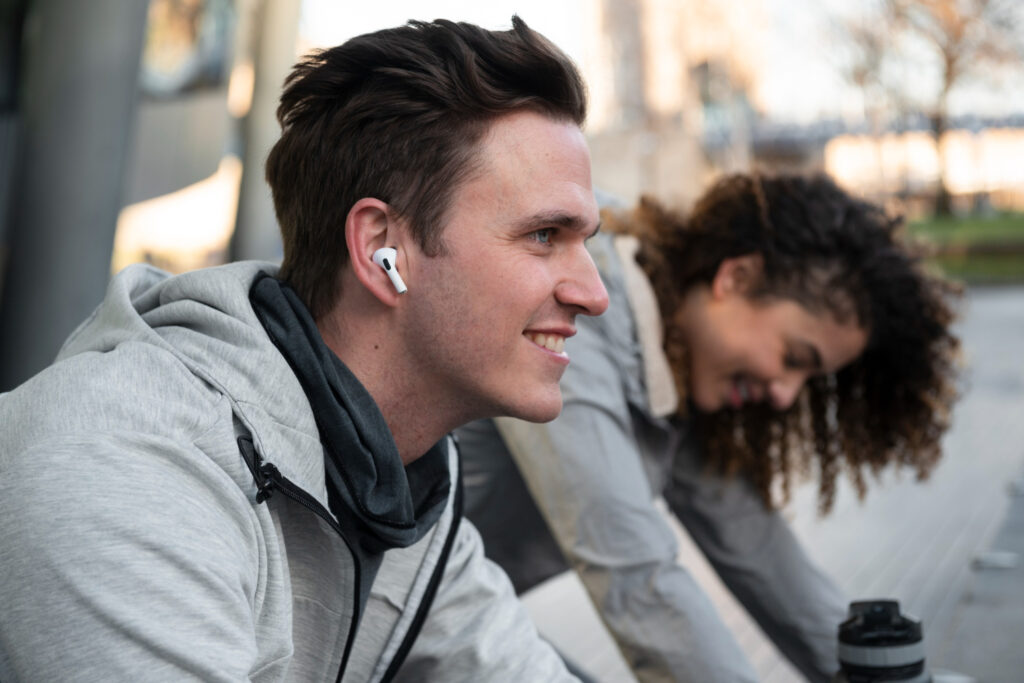From morning commutes to workout sessions, those little buds in our ears have become as essential as our morning coffee. But here’s the million-dollar question: how long can we safely use earphones before our hearing starts waving the white flag? If you’re already experiencing tinnitus (that annoying ringing in your ears) or noticing that you’re constantly asking people to repeat themselves, this guide is especially for you.
The Uncomfortable Truth About Our Earphone Habits
Let’s face it – we’re all guilty of cranking up our favorite tunes to drown out the world. A 2023 survey by the American Audiology Association found that the average American uses earphones for approximately 4.5 hours daily, with younger adults averaging closer to 6 hours. That’s basically a part-time job for your ear canals!
What’s more concerning is that nearly 70% of earphone users regularly listen at volumes exceeding safety recommendations. We get it – Taylor Swift’s bridge hits differently at maximum volume, but your future self might not appreciate the trade-off.
The 60/60 Rule: Your Ears’ New Best Friend
Audiologists widely recommend following what’s called the “60/60 Rule”:
- Keep volume at or below 60% of your device’s maximum
- Limit continuous listening time to 60 minutes, followed by a 10-minute break
This simple guideline can dramatically reduce your risk of noise-induced hearing damage while still letting you enjoy your podcasts and playlists.
Signs Your Ears Might Be Crying For Help
Your ears have ways of telling you they’re struggling, but these signals often get ignored. Pay attention if you experience:
- Ringing or buzzing in your ears after listening sessions
- Muffled hearing that lasts hours after removing earphones
- Having to constantly increase volume to enjoy the same content
- Finding yourself saying “What?” more frequently in conversations
- Feeling discomfort or pain when using earphones, even at lower volumes
These aren’t just minor inconveniences – they’re your body’s warning system alerting you that damage may be occurring.
Not All Earphones Are Created Equal
The type of earphones you choose matters significantly for hearing health:
Over-Ear Headphones
Pros: Generally create more distance between sound source and eardrum; often provide better noise isolation without cranking volume Cons: Bulkier; can be hot during exercise
In-Ear Earbuds
Pros: Convenient and portable Cons: Position sound closer to eardrum; often lead users to increase volume to overcome external noise
Noise-Cancelling Options
Pros: Allow lower volume listening by blocking ambient noise Cons: Premium price point; can create a feeling of pressure for some users
A 2022 study published in the Journal of Acoustic Health found that users of noise-cancelling headphones typically listened at volumes approximately 25% lower than those using standard earbuds – a significant difference for long-term hearing health.
Smart Habits for Healthier Hearing
Incorporating these practices can help preserve your hearing while still enjoying your audio content:
1. Embrace the Volume Limit Feature
Most smartphones and audio devices now include options to set maximum volume limits. Take five minutes to configure this setting – your future self will thank you.
2. Try the “Arm’s Length Test”
If someone standing an arm’s length away can hear sound leaking from your earphones, your volume is too high.
3. Use Specialized Earphones If You Have Tinnitus
For those already experiencing tinnitus, consider earphones designed specifically for sensitive hearing. These often feature customizable frequency responses that can minimize tinnitus aggravation.
4. Practice Sound Hygiene
Give your ears regular breaks from all sound inputs – not just earphones. Find quiet spaces in your day where your auditory system can reset.
5. The 20-20-20 Rule (Borrowed From Eye Health)
Every 20 minutes, take 20 seconds to remove your earphones and listen to the natural environment around you, ideally focusing on sounds at least 20 feet away. This helps “recalibrate” your hearing system.
What About Wireless Earbuds and Radiation?
Let’s address the elephant in the room: some folks worry about potential radiation from wireless earbuds. Current scientific consensus suggests the electromagnetic radiation from Bluetooth earphones is minimal and not a significant health concern. The American Cancer Society notes that these devices emit non-ionizing radiation at power levels far below those considered harmful.
The real hearing health concern remains the sound volume and duration – not the wireless technology itself.
Creating Your Personal Listening Plan
Everyone’s hearing sensitivity and daily audio needs differ. Try this personalized approach:
- Baseline Assessment: Use a week to monitor your current earphone usage (hours per day and typical volume level)
- Gradual Adjustment: Reduce both time and volume by 10% each week until reaching safer levels
- Alternative Solutions: For noisy environments, consider noise-cancelling options instead of increasing volume
- Weekly Sound Fasts: Designate one day a week as a “low audio input day” where you minimize all earphone use
When to Talk to a Professional
If you’re experiencing persistent tinnitus, hearing difficulties, or ear discomfort, consider consulting an audiologist. Many offer free basic hearing screenings that can establish your current hearing baseline and identify any concerns before they progress.
Your earphones aren’t inherently the enemy – it’s how we use them that matters. By adopting mindful listening habits today, you’re investing in conversation-filled dinners, music appreciation, and nature sounds for decades to come.
Remember: the best sound experience isn’t about maximum volume – it’s about preserving your ability to enjoy all sounds throughout your lifetime.

Disclaimer: This article provides general information and suggestions for educational purposes only and is not a substitute for professional medical advice. If you’re experiencing hearing problems, tinnitus, or ear pain, please consult with a qualified healthcare provider or audiologist for proper evaluation and treatment recommendations.



